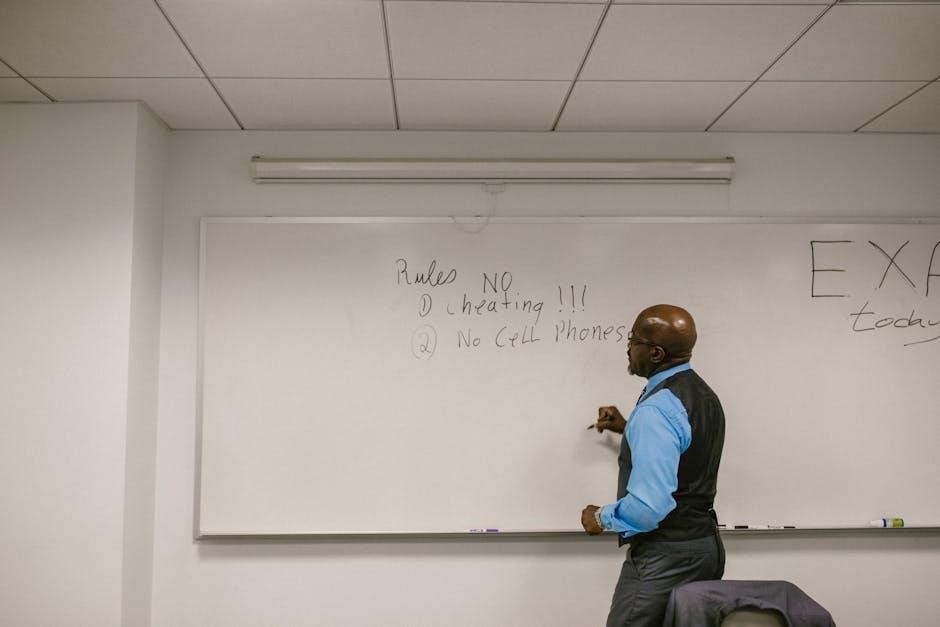bodyguardian mini plus instructions
The BodyGuardian Mini Plus is a wearable heart monitor designed to detect irregular heart rhythms․ It is prescribed by physicians for continuous cardiac monitoring․ The device is small, lightweight, and user-friendly, making it suitable for long-term use․ It transmits data in near-real-time to monitoring centers, ensuring timely medical interventions․ Manufactured by Boston Scientific, it is part of the Preventice Services cardiac monitoring program․ Patients must follow their doctor’s instructions precisely for accurate results․
1․1 Overview of the Device
The BodyGuardian Mini Plus is a compact, lightweight wearable monitor designed for continuous cardiac event monitoring․ It is part of the Preventice Services cardiac monitoring program, offering real-time data transmission to the Boston Scientific Cardiac Diagnostics monitoring center․ The device is water-resistant up to 3 feet and can be worn during showers or baths but must be removed for deeper swimming․ It features a micro-USB connector for charging and is designed for comfort and ease of use during daily activities, including air travel․ Proper attachment and care are essential for accurate monitoring․
1․2 Key Features and Benefits
The BodyGuardian Mini Plus offers real-time heart rhythm monitoring, ensuring timely detection of irregularities․ Its compact design enhances comfort during daily activities․ Water-resistant up to 3 feet, it allows showering but requires removal for deeper swimming․ The device pairs with a smartphone app, enabling uninterrupted monitoring during air travel․ Automatic alerts notify users of poor skin contact or low battery, while near-real-time data transmission to the monitoring center enhances patient care․ These features make it an effective tool for continuous cardiac event detection and management․ Proper use ensures accurate health insights and peace of mind for users․
1․3 What’s Included in the Package
The BodyGuardian Mini Plus package includes the monitor, reusable adhesive strips, an ECG lead set, and a charging cable․ The monitor attaches securely to the strip, ensuring proper adhesion․ Additional components may vary, but typically include a user manual and quick-start guide․ The device is designed for ease of use, with clear instructions for setup and pairing with your smartphone; The package also provides information on data transmission and monitoring services․ Everything needed for initial setup and operation is included to ensure a seamless experience for patients․

Getting Started with BodyGuardian Mini Plus
Attach the monitor to the strip, charge the device, and pair it with your phone․ Follow the setup guide for a smooth initial configuration and connection process․
2․1 Attaching the Monitor to the Strip
Align the micro-USB connector on the strip with the monitor’s port․ Slide the monitor into the black molding until the connector clicks securely into place․ Ensure proper alignment to avoid issues․ Wiggle the monitor slightly if needed for a snug fit․ After attaching, pinch the connector to confirm it is fully seated․ This ensures reliable data transmission and a stable connection․ Proper attachment is crucial for accurate heart monitoring and uninterrupted data flow to your healthcare provider․
2․2 Charging the Device
To charge the BodyGuardian Mini Plus, use the provided USB charger or a compatible USB port․ Plug the charging cord into the monitor’s micro-USB port until it clicks․ Charge the device when the battery is low, as indicated by the battery status alerts․ Avoid exposing the device to water while charging․ Ensure the monitor is clean and dry before charging to maintain proper function․ Charging typically takes a few hours, and the device can be used while charging if necessary․ Always use the original charger to prevent damage․
2․3 Initial Setup and Pairing with Your Phone
Download and install the BodyGuardian app from the App Store or Google Play Store․ Open the app and follow the on-screen instructions to create an account or log in․ Ensure your phone’s Bluetooth is enabled․ Pair the monitor by selecting it from the available devices list in the app․ Once connected, the app will guide you through configuring settings and enabling notifications․ Test the connection by ensuring data transmission is active․ If pairing fails, restart both the phone and monitor, then try again․ Proper pairing ensures seamless monitoring and alerts․

Wearing and Positioning the BodyGuardian Mini Plus
The BodyGuardian Mini Plus can be worn vertically or horizontally․ Remove hair from the placement area for better adhesion․ Attach the monitor to the strip securely and ensure proper alignment for accurate heart monitoring․ Always check the device’s position for comfort and functionality during daily activities․
3․1 Vertical vs․ Horizontal Placement
The BodyGuardian Mini Plus can be placed either vertically or horizontally, depending on personal comfort and preference․ Vertical placement allows for easier access to the monitor’s controls, while horizontal placement may provide a more discreet fit under clothing․ Regardless of orientation, ensure the device is securely attached to the strip and positioned on a hair-free area of the chest for optimal adhesion and accurate heart rhythm monitoring․ Proper placement is crucial for reliable data transmission to healthcare providers․ Always follow the manufacturer’s guidelines for placement to avoid any issues with device functionality or data accuracy․
3․2 Preparing Your Skin for the Device
To ensure proper adhesion and functionality of the BodyGuardian Mini Plus, prepare your skin by cleaning the area with soap and water․ Remove any lotions, oils, or powders, as they can interfere with the adhesive․ If hair is present at the placement site, consider trimming or shaving to prevent interference․ Allow the skin to dry completely before applying the device․ Avoid tight clothing that may cause friction or dislodge the monitor․ If you have skin conditions like eczema, consult your doctor for guidance․ Proper preparation ensures accurate monitoring and comfort during use․
3․4 Ensuring Proper Adhesion
Press the BodyGuardian Mini Plus firmly onto your skin to secure it in place․ Ensure there are no air bubbles under the adhesive, as this can compromise adhesion․ Avoid touching the adhesive surface before application to prevent oil from your skin reducing its stickiness․ If the device loosens, gently press it back into place․ Regularly inspect the adhesive for wear and tear․ If the device repeatedly detaches, consult your healthcare provider for additional guidance․ Proper adhesion ensures continuous monitoring and accurate data collection․ Always follow the manufacturer’s guidelines for optimal results․

Daily Activities and the BodyGuardian Mini Plus
The BodyGuardian Mini Plus is designed for wear during daily activities, including showering and bathing․ However, remove it before swimming in water deeper than 3 feet․ Safe for air travel․
4․1 Wearing the Device During Daily Activities
The BodyGuardian Mini Plus is lightweight and discreet, allowing you to wear it comfortably during daily activities․ It is safe to wear while showering or bathing, but remove it before swimming deeper than 3 feet․ The device is also safe for air travel․ Ensure proper adhesion to avoid poor skin contact alerts․ Daily activities like exercising or working can be done without removing the monitor․ Keep the phone away from water to maintain functionality․ Follow all guidelines for optimal performance and accurate heart monitoring․
4․2 Showering and Bathing with the Monitor
The BodyGuardian Mini Plus is waterproof and safe to wear while showering or bathing․ Ensure the device adheres properly to your skin to avoid poor contact alerts․ While it is water-resistant, the phone used for data transmission is not waterproof, so keep it away from water․ Do not submerge the monitor in water deeper than 3 feet․ For swimming, remove the device if water depth exceeds 3 feet․ Always follow these guidelines to maintain device functionality and ensure accurate heart monitoring during these activities․
4․3 Swimming and Water Depth Guidelines
The BodyGuardian Mini Plus is designed to be water-resistant but should not be submerged in water deeper than 3 feet․ If swimming, remove the monitor before entering water exceeding this depth to prevent damage․ The device itself is waterproof, but the paired phone is not, so keep it dry․ Always follow these guidelines to ensure proper device functionality and maintain accurate heart monitoring during water activities․ Adhering to these precautions will help prolong the life of the monitor and ensure reliable data transmission․
4․4 Exercising While Wearing the Monitor
The BodyGuardian Mini Plus is designed to accommodate daily activities, including exercise․ It is lightweight and secure, allowing you to move freely․ For optimal performance, ensure the monitor is properly attached to the Strip and your skin is prepared․ Avoid extreme movements that may cause poor skin contact․ The device is water-resistant up to 3 feet, so sweating or light water exposure during exercise is acceptable․ However, remove the monitor before swimming in deeper water․ Follow these guidelines to maintain accurate heart monitoring while staying active․
Air Travel and the BodyGuardian Mini Plus
The BodyGuardian Mini Plus is safe to wear during air travel․ It does not need to be removed․ Cellular network range affects data transmission but not monitoring․
5․1 Safety During Air Travel
The BodyGuardian Mini Plus is safe to wear during air travel and does not need to be removed․ The device does not interfere with aircraft systems, ensuring uninterrupted monitoring․ While in flight, cellular network range may affect data transmission, but monitoring continues uninterrupted․ Once back in range, data is transmitted to your healthcare provider․ This ensures continuous heart monitoring without travel-related interruptions, providing peace of mind for patients during air travel․
5․2 Cellular Network Range and Data Transmission
The BodyGuardian Mini Plus relies on cellular networks to transmit heart data to monitoring centers․ If the phone moves out of range, monitoring continues, but data transmission pauses until reconnected․ This ensures uninterrupted heart monitoring, even in areas with limited coverage․ Once back in range, data is sent automatically to healthcare providers, maintaining seamless communication and care․ This feature is crucial for continuous patient oversight, especially during travel or in remote locations․

MRI Compatibility and Safety Precautions
The BodyGuardian Mini Plus is not MRI-compatible and must be removed before undergoing any MRI procedure․ Electromagnetic fields may interfere with its operation․
6․1 Wearing the Device During an MRI
The BodyGuardian Mini Plus should not be worn during an MRI scan․ The strong magnetic fields in MRI machines can interfere with the device’s operation and cause damage․ Patients must remove the monitor before undergoing an MRI procedure․ Failure to do so may result in inaccurate readings or device malfunction․ Always consult your healthcare provider for specific instructions regarding MRI procedures․ Proper removal ensures both your safety and the integrity of the monitoring process․
- Inform your healthcare provider if an MRI is scheduled․
- Remove the device as instructed before the procedure․
- Ensure the monitor is safely stored during the MRI․
6․2 Electromagnetic Compatibility Considerations
The BodyGuardian Mini Plus is designed to operate safely in most electromagnetic environments․ However, strong electromagnetic fields, such as those from high-voltage lines or industrial equipment, may interfere with its function․ Avoid exposing the device to powerful magnetic or electrical sources․ Additionally, the monitor should not be placed near metal detectors or security scanners, as this may cause temporary disruptions․ If you work in environments with strong electromagnetic fields, consult your healthcare provider or the user manual for guidance․ Always ensure the device is used in conditions that maintain its performance and accuracy․
- Avoid strong electromagnetic fields․
- Keep the device away from metal detectors․
- Consult the user manual for specific guidance․

Troubleshooting Common Issues
Troubleshoot issues like poor skin contact alerts by ensuring proper adhesion․ Address battery status concerns by checking charge levels or recharging the device․ Resolve connectivity problems by restarting the monitor or phone․ Ensure the monitor is securely attached to the strip for accurate readings․ Consult the user manual or contact support for persistent issues․ Regularly clean the device to maintain functionality and avoid false alerts․ Always follow manufacturer guidelines for optimal performance․
7․1 Poor Skin Contact Alerts
Poor skin contact alerts occur when the BodyGuardian Mini Plus loses proper adhesion to your skin, disrupting data collection․ To resolve this, ensure the skin is clean, dry, and free of hair where the monitor is applied․ Reattach the device firmly, following the provided alignment guide․ If issues persist, check for moisture or oils on the skin and re-clean the area․ Restarting the device may also help re-establish a stable connection․ Always refer to the user manual for detailed troubleshooting steps to maintain accurate monitoring and avoid false alerts․
7․2 Battery Status and Charging Issues
If the BodyGuardian Mini Plus shows low battery or charging issues, ensure the charging cable is securely connected․ Verify the USB port is clean and free of debris․ Use only the provided charger to avoid compatibility problems․ If the battery icon does not appear, restart the device․ For persistent issues, contact technical support․ Regular charging is crucial to maintain continuous monitoring․ Always monitor the battery status indicator to prevent unexpected shutdowns during critical data collection․ Proper care ensures reliable performance and accurate heart monitoring․

Maintenance and Care of the Device
Regularly clean the BodyGuardian Mini Plus with isopropyl alcohol wipes to maintain functionality․ Avoid exposing it to water beyond 3 feet․ Store in a cool, dry place when not in use, preferably in its original packaging to prevent damage․
8․1 Cleaning the Monitor and Strips
Regular cleaning of the BodyGuardian Mini Plus monitor and strips is essential for optimal performance․ Use isopropyl alcohol wipes to gently clean the monitor and strips, ensuring no residue or dirt interferes with adhesion or signal quality․ Avoid using harsh chemicals or abrasive materials, as they may damage the device․ After cleaning, allow the device to dry thoroughly before reattaching it to your skin․ This maintenance ensures proper skin contact and accurate heart monitoring․ Always follow the manufacturer’s guidelines for cleaning to maintain device integrity and functionality․
8․2 Storing the Device When Not in Use
When not in use, store the BodyGuardian Mini Plus in a cool, dry place away from direct sunlight․ Avoid exposing the device to extreme temperatures or moisture․ Ensure the monitor is completely dry before storage to prevent damage․ Use the original packaging if available to protect the device․ Do not submerge the monitor in water, as it is not waterproof․ Proper storage maintains the device’s functionality and ensures it remains ready for future use․ Always follow the manufacturer’s guidelines for storing the BodyGuardian Mini Plus to preserve its performance and longevity․

Battery Management
Charge the BodyGuardian Mini Plus using the provided cable․ Ensure the micro-USB connector is fully inserted․ Avoid exposing the device to water during charging․ Monitor battery status indicators for optimal performance․
9․1 Charging the BodyGuardian Mini Plus
To charge the BodyGuardian Mini Plus, use the provided USB cable․ Align the micro-USB connector with the port on the device and ensure it is fully inserted․ Plug the other end into a compatible power source․ Charge the monitor for at least 2 hours before initial use․ Avoid exposing the device to water during charging․ If the charging port is dirty, clean it gently with a dry cloth․ Do not use harsh chemicals or submerge the device in water․ Follow these steps to maintain optimal battery performance․
9․2 Understanding Battery Status Indicators
The BodyGuardian Mini Plus features visual and audible alerts for battery status․ A green light indicates a full charge, while yellow signals low battery․ Red means the battery is critically low and needs charging immediately․ The device also vibrates when the battery level drops below 10%․ Ensure the monitor is charged regularly to avoid interrupted monitoring․ Refer to the user manual for detailed guidelines on interpreting these indicators and maintaining optimal battery life for consistent performance․ Proper monitoring ensures accurate heart data transmission to healthcare providers․ Always follow charging instructions to prolong the device’s functionality․

Monitoring and Data Transmission
The BodyGuardian Mini Plus uses color-coded LED indicators to show battery status․ A green light indicates a full charge, yellow signifies low battery, and red means critical levels․ The device also vibrates when the battery drops below 10%․ Ensure to charge the monitor when these alerts appear to maintain continuous operation․ Refer to the user guide for detailed charging instructions and troubleshooting tips to optimize battery performance and ensure uninterrupted monitoring․ Proper battery care is essential for accurate data transmission and reliable functionality․ Always monitor these indicators to prevent unexpected shutdowns during use․
10․1 Real-Time Data Transmission to the Monitoring Center
The BodyGuardian Mini Plus transmits heart data continuously to the monitoring center via cellular networks․ This real-time system ensures immediate analysis and alerts for irregular heart activity․ If the paired phone loses network coverage, data transmission pauses until connectivity resumes․ The device maintains monitoring capabilities during this time, storing data temporarily․ Once reconnected, all stored information is sent to the center․ This seamless process allows for early detection of potential cardiac issues and ensures timely medical interventions․ Patients can rely on constant monitoring without needing to remove the device during daily activities․
10․2 Reviewing Your Heart Data with Your Physician
After the monitoring period, your physician reviews the data transmitted by the BodyGuardian Mini Plus․ This comprehensive analysis helps identify irregular heart rhythms and patterns․ The data is presented in a detailed report, which your doctor uses to diagnose conditions like arrhythmias or other cardiac issues․ Discussing these results with your physician is crucial for understanding your heart health and determining the next steps in your care․ This collaborative approach ensures personalized treatment plans based on accurate and reliable data collected by the device․

When to Remove the BodyGuardian Mini Plus
Remove the BodyGuardian Mini Plus when your physician ends the monitoring period or before undergoing an MRI․ The device is disposable after use, ensuring patient safety and hygiene․
11․1 Removing the Device for MRI Procedures
The BodyGuardian Mini Plus must be removed before undergoing an MRI due to MRI compatibility concerns․ To remove, first detach the Strip or electrodes from your chest, then carefully take off the monitor․ This ensures safety and prevents potential interference․ Always consult your healthcare provider before the MRI to confirm removal․ The device is disposable after removal, maintaining hygiene standards and ensuring no reuse․ Proper removal is crucial for both patient safety and accurate MRI results․
11․2 Ending the Monitoring Period
Once your monitoring period concludes, wait for your physician or healthcare provider to officially end the service․ Carefully remove the Strip or electrodes from your chest, followed by the monitor․ Clean the area with mild soap and water to remove any adhesive residue․ Return the device to the designated center as instructed․ Ensure all components, including the monitor and strips, are included in the return package․ Proper disposal and return ensure data accuracy and device reusability for future patients․
